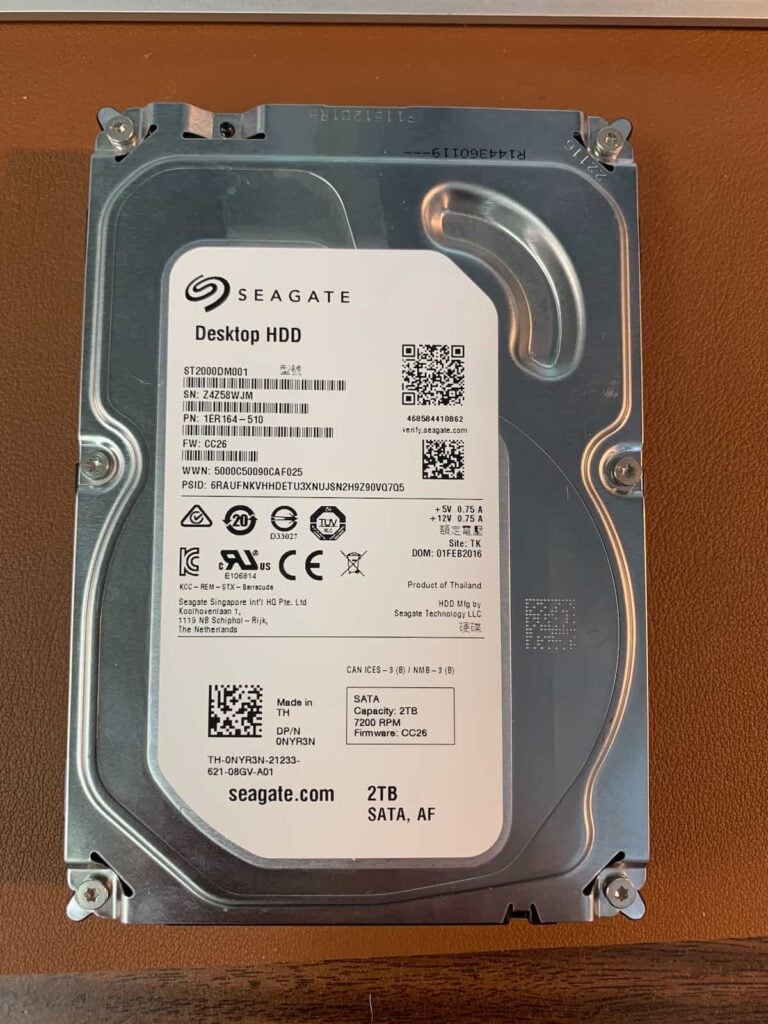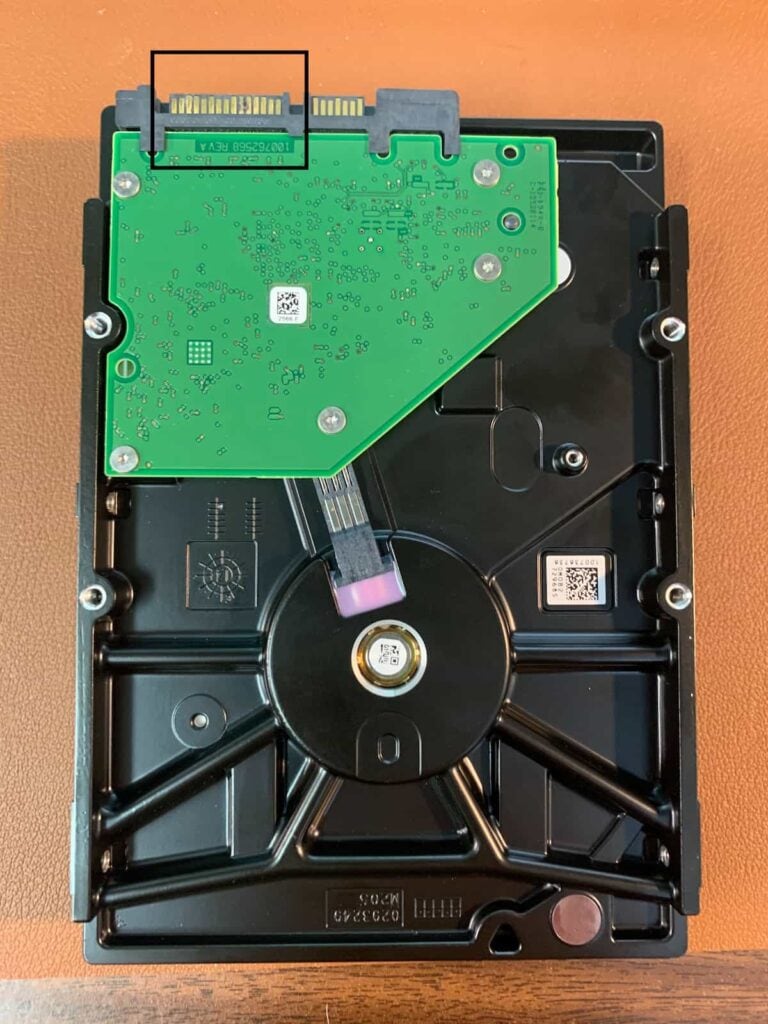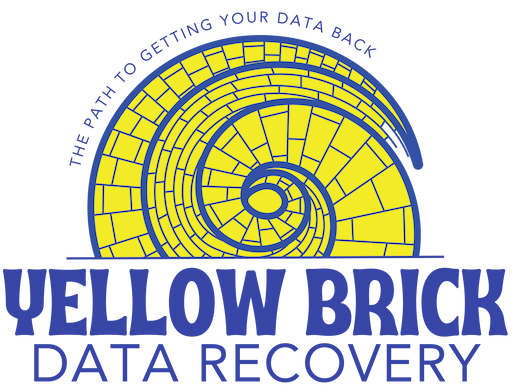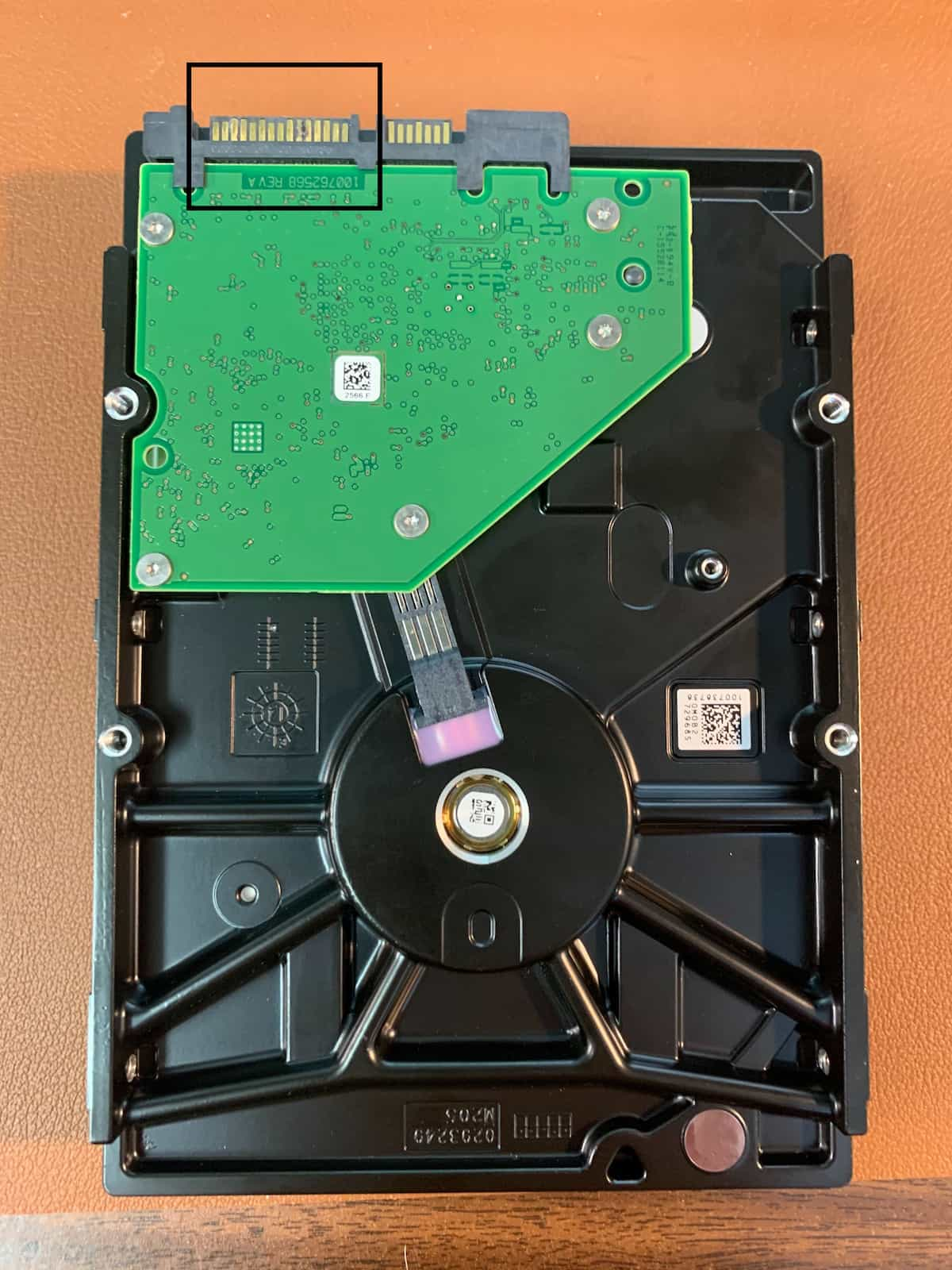The hard drive not showing up issue can be caused by many different things. The most common issues are ones with bad sectors, failed heads if the drive was dropped, or issues with partition corruption. Anytime a drive stops working right after some sort of power issue (like a power surge), I would suspect the PCB board to have issues.
Seagate Hard Drive Not Showing Up
This particular Seagate ST2000DM001 2TB Desktop Drive came from a shop that offers some data recovery services, but mainly focuses on computer repair. Their client had reported the drive no longer would be recognized by any computer, and the shop verified this was the case by attaching it to their test machines. The drive wouldn’t even spin up or make any noise when turned on.
The shop that looked at the drive initially recommended the customer contact us regarding data recovery as they had important files on the drive that had not been backed up. In the past, this shop had recommended one of the larger data recovery companies that reportedly quoted over $1000 for every drive that was ever sent to them. Our affordable data recovery services have helped this shop enable its clients to get their important data back without breaking the bank!
Inspecting the Seagate ST2000DM001
The client called to discuss their Seagate hard drive not showing up and we set up an appointment for dropoff. Once I received the drive, I completed a visual inspection and immediately saw the issue. I found damage on the power port that was the likely culprit of the no power issue. I had a donor Printed Circuit Board (PCB) in stock for this exact model so I was able to swap out the PCB and swap over the ROM chip right away.


Imaging the power damaged drive
Once the PCB and ROM chip swap was complete, I connected the drive to the PC-3000 and completed all the standard procedures to prepare the drive for imaging. With these Seagate drives, I always turn off all the features of the drive that might cause problems during imaging. Since the drive was now spinning up and reading properly, I was confident the issue had been addressed, but you should always complete the imaging process before moving on to the data transfer stage.
The imaging process was completed with very few bad sectors being found. It is interesting to note that a lot of fully working drives actually have a few bad sectors. There is usually a feature in the firmware of a drive that recognizes failing sectors and marks them to not be used in the future. When I turn off those features while imaging a drive, I will hit those bad sectors and sometimes not be able to recover them. In this case, there was no data being stored in the bad sectors, so I got 100% of the sectors that were storing any data.
Once all the sectors were imaged I used a few of my favorite data recovery programs to scan the sectors and bring back all the data with full folder structure and file names. I moved all the recovered data onto the customer’s new drive, and they were very pleased with the results!
Get your own ST2000DM001 hard drive recovered
I don’t see a lot of these power-related issues, but every once in a while I will get a drive that has PCB damage as the main issue. If you have a drive that needs to be recovered, please fill out my data recovery quote form and I will get back to you on what will likely be needed to complete the recovery right away.
Drive info: Seagate ST2000DM001, 2TB SATA, P/N: 1ER164-510, FM: CC26, DOM: 01FEB2006, SITE: TK

